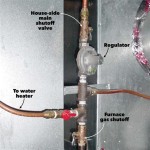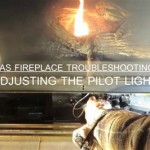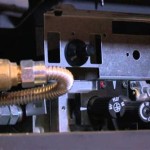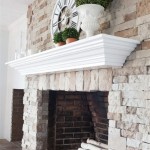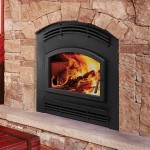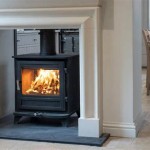Wood Burning Fireplace Insert With Gas Starter: A Detailed Overview
Wood-burning fireplace inserts with gas starters provide a unique blend of traditional ambiance and modern convenience. These inserts are designed to fit into existing masonry fireplaces, offering improved heating efficiency and reduced emissions compared to traditional open fireplaces. The gas starter component adds a layer of ease, simplifying the process of initiating a wood fire.
Understanding the functionality, benefits, and considerations associated with wood-burning fireplace inserts equipped with gas starters is crucial for homeowners contemplating this heating appliance. This article will provide a comprehensive overview, covering various aspects from installation to maintenance, ensuring readers have the necessary knowledge to make informed decisions.
Key Point 1: Functionality and Design
A wood-burning fireplace insert with a gas starter operates on the fundamental principle of convective and radiant heat production. The insert itself is a self-contained firebox, typically constructed of cast iron or steel, designed to be installed directly into an existing fireplace opening. This enclosed design significantly improves heating efficiency compared to an open fireplace, which loses a substantial amount of heat up the chimney.
The gas starter element, usually a pipe or burner located beneath the wood grate, is connected to a natural gas or propane line. When activated, the gas starter provides a consistent and easily controllable flame to ignite the logs. This eliminates the need for kindling and paper, streamlining the fire-starting process and reducing the associated mess.
The insert's design incorporates a door, typically made of glass, which allows for viewing the fire while preventing uncontrolled drafts and sparks from entering the room. Many models also feature a blower fan, which circulates heated air from the firebox into the room, further enhancing heating efficiency. Air controls regulate the airflow into the firebox, allowing users to adjust the burning rate and heat output. Baffles within the firebox help to maximize heat retention and reduce emissions by promoting more complete combustion.
The venting system is a critical component of the insert. Unlike open fireplaces that rely on the existing chimney, inserts typically require a dedicated stainless steel liner to be installed within the chimney. This liner ensures proper draft and prevents the build-up of creosote, a flammable byproduct of wood combustion. The liner size and installation method are dictated by the insert manufacturer's specifications and local building codes.
The efficiency of a wood-burning fireplace insert is measured by its heat output and combustion efficiency. Heat output is typically expressed in British Thermal Units (BTUs), indicating the amount of heat the insert can generate per hour. Combustion efficiency refers to the percentage of fuel that is converted into usable heat. Modern EPA-certified inserts boast significantly higher efficiencies than older models, minimizing wood consumption and reducing emissions.
Key Point 2: Benefits and Advantages
The adoption of a wood-burning fireplace insert with a gas starter presents several distinct advantages. One of the primary benefits is the improved heating efficiency. Traditional open fireplaces are notoriously inefficient, losing as much as 90% of the heat up the chimney. Fireplace inserts, on the other hand, can achieve efficiencies of 60% to 80%, providing a significant increase in usable heat.
Another advantage is the reduced emissions. Modern EPA-certified inserts are designed to burn wood more completely, reducing the amount of smoke and pollutants released into the atmosphere. This makes them a more environmentally friendly heating option compared to older fireplaces or non-certified inserts. Furthermore, many municipalities offer incentives or rebates for homeowners who install EPA-certified wood-burning appliances.
The gas starter offers a convenience factor that is particularly appealing to many homeowners. Starting a wood fire can be a time-consuming and sometimes challenging process. The gas starter eliminates the need for kindling, paper, and other fire-starting materials, simplifying the process and ensuring reliable ignition, even in less than ideal conditions.
Safety is another key consideration. Fireplace inserts are designed to be much safer than open fireplaces. The enclosed firebox prevents sparks and embers from escaping into the room, reducing the risk of fire hazards. The glass door provides a barrier, preventing accidental contact with the fire and reducing the risk of burns.
Aesthetic appeal is also a factor. Fireplace inserts are available in a wide range of styles and finishes, allowing homeowners to select a model that complements their existing décor. The glass door provides a clear view of the fire, enhancing the ambiance of the room. Some models offer decorative features such as ornate castings or simulated brick liners.
Key Point 3: Installation and Maintenance Considerations
Proper installation is crucial for the safe and efficient operation of a wood-burning fireplace insert with a gas starter. It is strongly recommended that installation be performed by a qualified and certified professional. This ensures that the insert is installed in accordance with manufacturer's specifications and local building codes.
The installation process typically involves preparing the existing fireplace opening, installing the stainless steel chimney liner, connecting the gas line to the gas starter, and installing the insert itself. The chimney liner must be properly sized to match the insert's venting requirements. The gas line connection must comply with all applicable safety regulations.
Regular maintenance is essential for maintaining the performance and longevity of the insert. This includes cleaning the chimney liner regularly to remove creosote buildup. Creosote is highly flammable and can pose a significant fire hazard if allowed to accumulate. The frequency of chimney cleaning will depend on the amount of wood burned and the type of wood used.
The firebox should also be cleaned regularly to remove ash and debris. The glass door should be cleaned with a specialized glass cleaner designed for high-temperature applications. The blower fan should be inspected and cleaned periodically to ensure proper airflow.
The gas starter should be inspected annually by a qualified technician. This includes checking for leaks in the gas line and ensuring that the burner is functioning properly. Any repairs or replacements should be performed by a qualified professional. Furthermore, it is crucial to use seasoned firewood. Wet or unseasoned wood burns less efficiently, produces more smoke, and contributes to creosote buildup.
When choosing a wood-burning fireplace insert with a gas starter, it is important to consider factors such as the size of the area to be heated, the efficiency of the insert, the style and aesthetics, and the cost of installation and maintenance. Consulting with a qualified professional can help homeowners make an informed decision and select the right appliance for their needs.
Compliance with local regulations is paramount. Before purchasing and installing an insert, homeowners should contact their local building department to determine if any permits or inspections are required. Failure to comply with local regulations can result in fines or other penalties.
The operational costs associated with a wood-burning fireplace insert include the cost of firewood, the cost of gas for the starter, and the cost of maintenance. The cost of firewood will vary depending on the region and the type of wood used. The cost of gas will depend on the local gas rates and the frequency of use. Maintenance costs will include chimney cleaning, inspections, and any necessary repairs.
Ultimately, a wood-burning fireplace insert with a gas starter represents a practical and aesthetically pleasing heating solution for many homes. Careful consideration of the features, benefits, installation requirements, and maintenance procedures will ensure optimal performance, safety, and long-term satisfaction.

Greenstart Igniter Made In America Fireplace Xtrordinair

Gas Fireplace Inserts Fireplacesdirect Com

30 Ruby Contemporary Intellifire Touch Direct Vent Fireplace Insert Blower And Remote Electronic Ignition Majestic

Convert To Gas Installing Fireplace Inserts Doctor Flue

35 Ruby Traditional Intellifire Touch Direct Vent Fireplace Insert Blower And Remote Electronic Ignition Majestic

Timberwolf Tdi3n Gas Burning Direct Vent Fireplace Insert Millivolt Ignition Ng

Can A Wood Burning Fireplace Be Converted To Gas The Flame Company

How To Install A Log Lighter Fireplace Gas Starter Pipe

Large Flush Wood Rectangular Nexgen Fyre Made In America Fireplace Xtrordinair

Nordik 34i Kozy Heat Fireplaces
Related Posts


